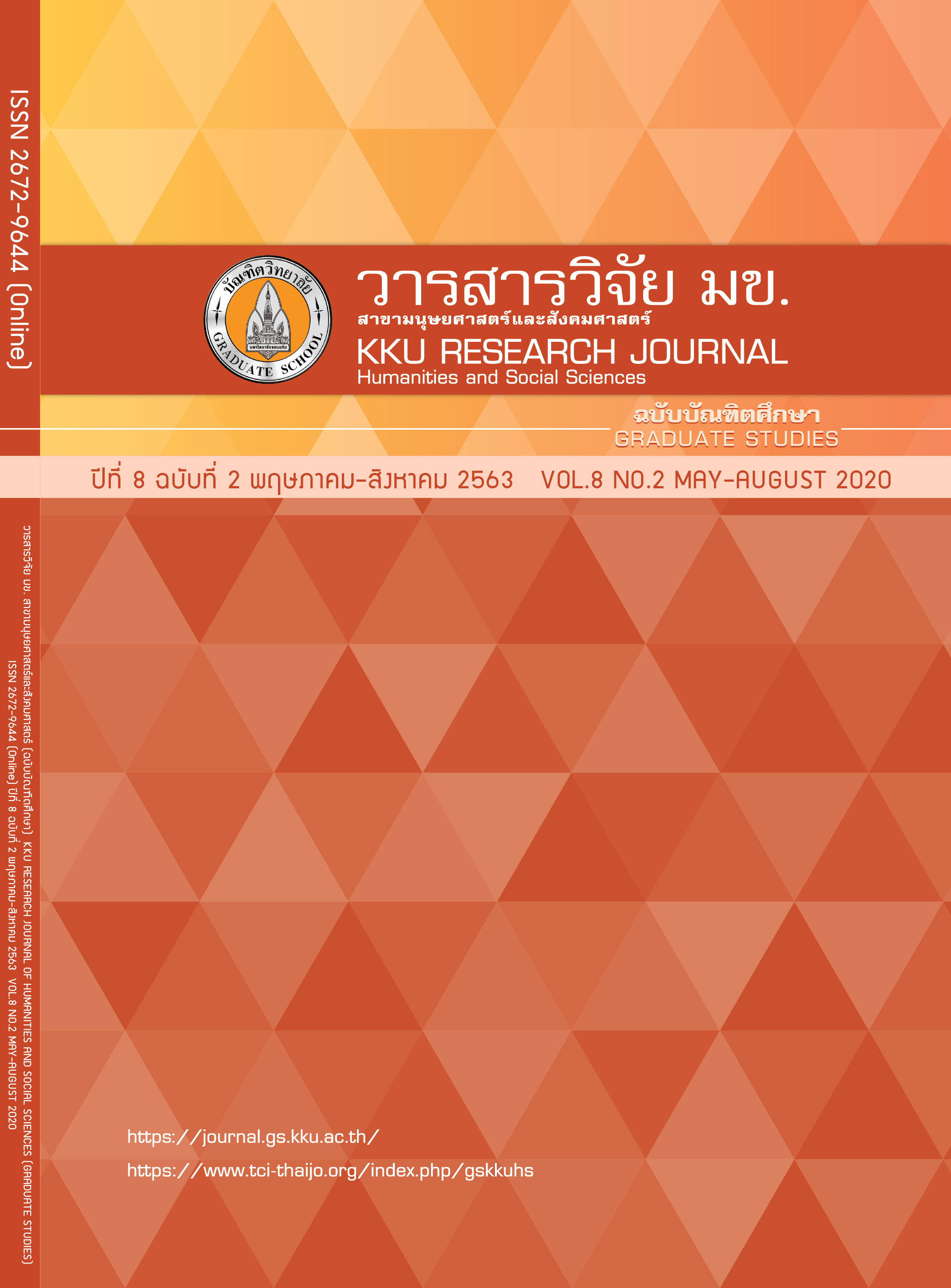การจัดการเรียนการสอนของครูมัธยมศึกษาในโรงเรียนเรียนรวมที่มีการปฏิบัติที่ดี: พหุกรณีศึกษา
คำสำคัญ:
โรงเรียนเรียนรวม, การจัดการเรียนการสอน, พหุกรณีศึกษาบทคัดย่อ
การวิจัยครั้งนี้มีวัตถุประสงค์เพื่อศึกษาสภาพการจัดการเรียนการสอนของครูมัธยมศึกษาในโรงเรียนเรียนรวมที่มีการปฏิบัติที่ดี สังกัดสำนักงานเขตพื้นที่การศึกษามัธยมศึกษาเขต 2 จำนวน 2 โรงเรียน ในชั้นเรียนรวม 3 รูปแบบ ได้แก่ ชั้นเรียนรวม ชั้นเรียนเสริมวิชาการ และชั้นเรียนพิเศษในโรงเรียนทั่วไป เก็บรวบรวมข้อมูลด้วยการสังเกต การสัมภาษณ์ และการวิเคราะห์เอกสาร วิเคราะห์ข้อมูลด้วยการวิเคราะห์เนื้อหา ผลการวิจัยพบว่า ชั้นเรียนพิเศษในโรงเรียนทั่วไป ครูจัดการเรียนการสอนที่เน้นความแตกต่างระหว่างบุคคลและยึดตามแผนการจัดการศึกษาเฉพาะบุคคล ชั้นเรียนเสริมวิชาการ ครูสอนโดยยึดตามจุดประสงค์ในแผนการจัดการศึกษาเฉพาะบุคคล และจัดการเรียนการสอน ที่อิงหลักฐานเชิงประจักษ์ ชั้นเรียนรวม ครูใช้เทคนิคเพื่อนช่วยเพื่อน การเสริมแรงพฤติกรรมที่พึงประสงค์ ครูส่งเสริมให้เด็กมีปฏิสัมพันธ์กับเพื่อนทั่วไปในห้อง เพื่อให้เด็กทั่วไปยอมรับเด็กที่มีความต้องการพิเศษ แต่ไม่ปรับเนื้อหาเนื่องจากต้องยึดเนื้อหาตามการสอบเป็นหลักและครูขาดความรู้ความเข้าใจในการสอนเด็กที่มีความต้องการพิเศษ ครูการศึกษาพิเศษมีบทบาทสำคัญในการติดตามก้าวหน้าและส่งต่อนักเรียนให้ได้รับระดับการช่วยเหลือที่เหมาะสม
เอกสารอ้างอิง
learning schools, Nonthaburi Province. FEU Academic Review.
2016; 10(2): 251-260. Thai.
2. Ramrit S. Effective inclusive model for secondary education
under Secondary Educational Service Area Office 4. Journal of
Education Research, Faculty of Education, Srinakharinwirot University.
2016; 10(1): 181-193. Thai.
3. Wut K. Problem and guides development in inclusive school for
Nogbonwittayakom school under the Secondary Educational Service
Area Office 17 [MEdu Thesis]. Chonburi: Burapha University; 2013. Thai.
4. Kudhom A. A study of the best practices of leading mainstreaming
schools according to the special education standards: a multicase study
research [MEd Thesis]. Bangkok: Chulalongkorn University; 2007. Thai.
5. Tantixalerm C. Response to intervention (RTI): principles, core
components, and practical implications for promoting inclusive education
practices in Thailand. Journal of Research Methodology. 2017; 30(2):
187-227. Thai.
6. Special Education Bureau. Number of students in school under
the Secondary Educational Service Area 2 report [Internet]. [
cited 2019 January 19]. Available From: http://specialbasic.specialset.
bopp.go.th/specialbasic/report_school_10_pdf.php?ireport=361_1t. Thai.
7. Special Education Bureau. Creating individualized education program:
IEP handbook. [Internet]. [cited 2019 January 19]. Available From: http://www.esbuy.net/_files_school/00000961/data/00000961_1_20180507-
155300.pdf. Thai.
8. Suriyakhamwong J, Jaingam, S. Guideline for the operation of
individualized education program in the inclusive pilot schools under
Sukhothai educational service area office. Journal of Faculty of Education
Pibulsongkram Rajabhat University. 2015; 2(2): 60-72. Thai.
9. Sangtongpitak S. Learning and teaching model for students with
learning disability of leading inclusive school: a case study of Nachuak
Pittayasan school [MEd Thesis]. Mahasarakham: Rajabhat Maha Sarakham
University; 2014. Thai.
10. Wong C, Odom SL, Hume KA, Cox AW, Fettig A, Kucharczyk S, et al.
Evidence-based practices for children, youth, and young adults with
autism spectrum disorder: a comprehensive review. Journal of Autism
and Developmental Disorders. 2015; 45: 1951–1966.
11. Salend S. Creating inclusive classrooms: effective and reflective
practices. Upper Saddle River: Pearson Merrill Prentice Hall; 2008.
12. Buli-Holmberg J, Jeyaprathaban S. Effective practice in inclusive
and special needs education. International Journal of Special Education.
2016; 31(1): 119-134.
13. Otukile-Mongwaketse M, Mangope B, Kuyini A. Teachers’ understandings
of curriculum adaptations for learners with learning difficulties in primary
schools in Botswana: issues and challenges of inclusive education. Journal
of Research in Special Educational Needs. 2016; 16(3): 169-177.




